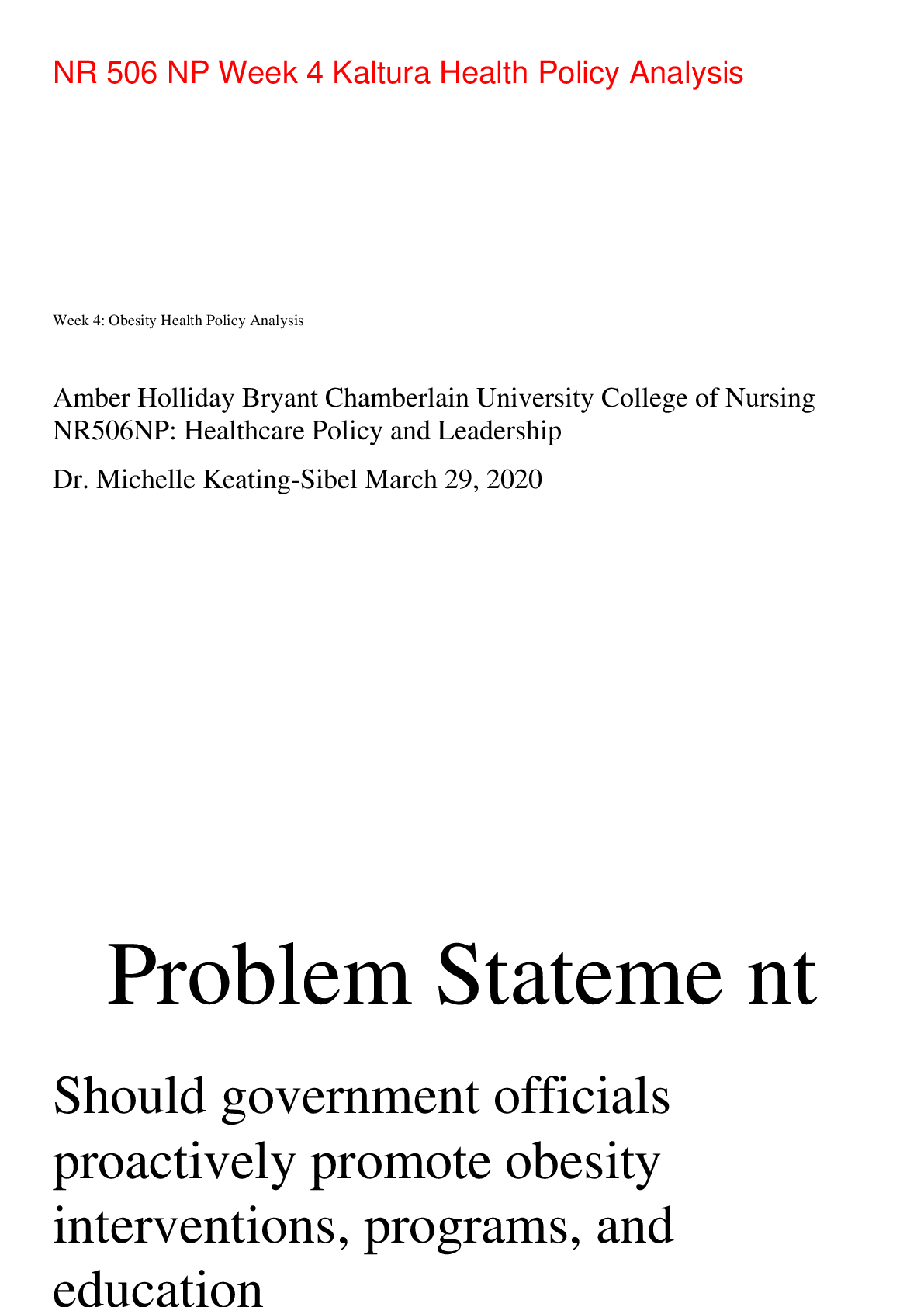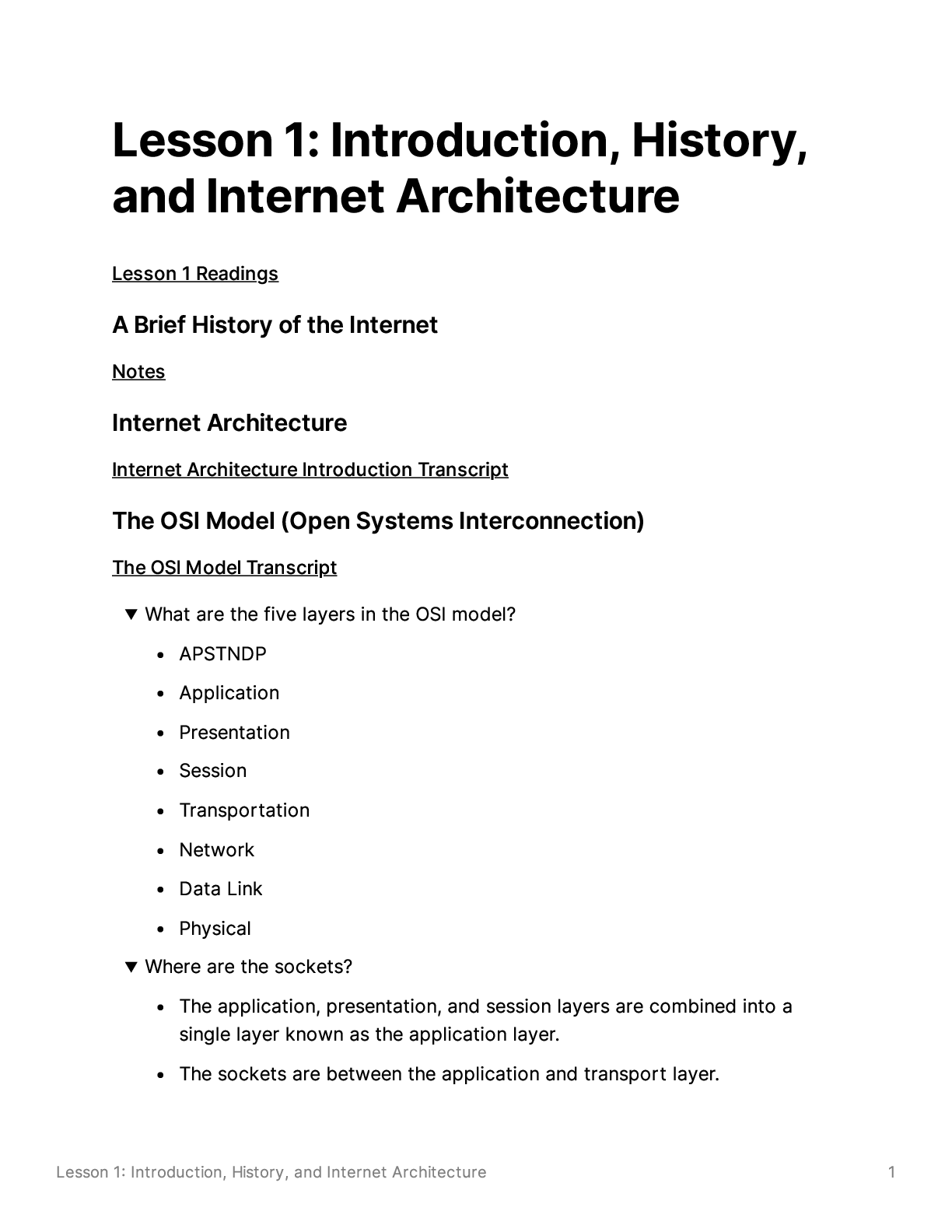Chemistry > STUDY GUIDE > University of California, Los AngelesCHEM Chem 30B UCarbonyl Rxn and Mechanisms (All)
University of California, Los AngelesCHEM Chem 30B UCarbonyl Rxn and Mechanisms
Document Content and Description Below
CFQ & PP: Carbonyl Chemistry: Survey of Reactions and Mechanisms Reading Brown and Foote: Sections 15.1, 16.6 – 16.11, 16.13, 16.14 17.4 – 17.8, 18.2 and 18.4 – 18.12 Lecture Supplement Ca... rbonyl Reaction Catalysis (page 50 of this Thinkbook) Suggested Text Exercises Brown and Foote: Chapter 15: 1, 2 Chapter 16: 4 – 11, 12 – 14, 19 – 45, 54 – 68 Chapter 17: 2 – 5, 18 – 43 Chapter 18: 2 – 12, 20 - 53 Optional Interactive Organic Chemistry CD and Workbook Supporting Concepts: Carbonyl Chemistry (p. 70) Mechanisms: Acid Anhydride Hydrolysis (p. 17) Acid-Catalyzed Formation of an Acetal (p. 18) Acid-Catalyzed Formation of a Hemiacetal (p. 19) Acid Chloride Hydrolysis (p. 19) Acid Hydrolysis of an Amide (p. 20) Base Hydrolysis of an Amide (p. 21) Base Hydrolysis of a Nitrile (p. 21) Ester Hydrolysis in Aqueous Base (p. 25) Fischer Esterification (p. 25) Formation of a Cyanohydrin (p. 26) Formation of an Imine from a Ketone (p. 26) Nylon Formation (p. 29) Reaction of an Ester with a Grignard Reagent (p. 31) Reduction of an Amide by LAH (p. 31) Reduction of an Ester by LAH (p. 32) Sodium Borohydride Reduction of a Ketone (p. 32) Wittig Reaction (p. 32) Wolff-Kishner Reduction (p. 32) Reactivity Explorer: Acid Chlorides and Anhydrides (p. 40) Amides (p. 43) Carboxylic Acids (p. 44) Esters (p. 45) Ketones and Aldehydes (p. 46)CFQ & PP: Carbonyl Chemistry: Survey of Reactions and Mechanisms 181 Concept Focus Questions 1. Shown below is the formation of cyclic glucopyranose from acyclic glucose, an example of the intramolecular formation of a hemiacetal. O OH HO HO HOHO a-D-glucopyranose OH O HO HO HOHO H D-glycose (acyclic) O HO HO HOHO OH b-D-glucopyranose H 2O H2O (a) Show the mechanism of the reaction. (b) Why is the reaction faster in the presence of acid? (c) Why is the reaction faster in the presence of base? (d) How would the reactants be different if this reaction occurred in a living cell? 2. The reaction of retinal and opsin to form rhodopsin, a key step in the chemistry of vision, is an example of imine formation. R NH2 CH3 H 3C H3C CH3 O H CH3 CH3 H 3C H3C CH3 N H CH3 R opsin (R = rest of protein) retinal H3O+ rhodopsin (a) Write a mechanism for this reaction. (b) Explain how the mechanism suggests that H3O+ need be present in only a catalytic quantity for this reaction. 3. Reaction of a carboxylic acid with a large excess of an alcohol in the presence of a strong acid (usually H2SO4) is called the Fischer esterification. Ph OH O H 2SO4 CH3OH Ph OCH3 O (a) Give two specific reasons why must the carboxylic acid carbonyl be protonated prior to nucleophilic attack. (b) The first step of the mechanism is protonation of methanol and not the carboxylic acid. Explain. (c) In the second step of the mechanism, the carboxylic acid accepts a proton on the carbonyl oxygen instead of the hydroxyl oxygen. Explain this regioselectivity. (d) Provide a complete mechanism for this Fischer esterification. (e) How strong must the acid be?182 CFQ & PP: Carbonyl Chemistry: Survey of Reactions and Mechanisms (f) Suggest a general guideline concerning the necessity of carbonyl group protonation prior to nucleophilic attack. 4. Metal hydrides can be used to reduce an aldehyde or ketone into an alcohol. Write the mechanisms of the following reactions. H3C CH3 O NaBH4 H3C CH3 CH3CH2OH OH 1. LiAlH4 2. aq. H2SO4 H 3C CH3 OH 5. Grignard reactions involve the combination of a Grignard reagent of general form RMgX with a carbonyl compound. These reactions are commonly used to make carbon-carbon bonds, as shown below. Ph Ph O 1. CH3MgBr 2. aq. H2SO4 Ph Ph HO CH3 or Ph OCH3 O 1. CH3MgBr 2. aq. H2SO4 Ph CH3 HO CH3 (a) Define "organometallic compound." (b) Why do organometallic reagents provide a source of nucleophilic carbon groups? (c) Provide the mechanisms for both reactions given above. (d) Although carbon and magnesium are both common elements in the human body, Grignard reactions do not occur in cells. Why is this so? 6. Describe how the Wittig reaction could be used to transform benzaldehyde into styrene. Include all relevant reactions and mechanisms. Concept Focus Questions Solutions 1. (a) OH O HO HO HOHO H O O HO HO HOHO H H OH2 O O HO HO HOHO H H 2O H O OH HO HO HOHO H The other diastereomer (b-D-glucopyranose) is formed by an identical mechanism. The timing of proton transfer steps in this mechanism is not crucial. The alkoxide oxygen could be protonated prior to deprotonation of the oxonium ion. Because proton transfers are common mechanism steps, this timing issue will be encountered frequently. (b) Protonation of the alkoxide (RO-) of the tetrahedral intermediate bearing the negative charge in the last mechanism step shifts the last mechanism step [Show More]
Last updated: 2 years ago
Preview 1 out of 23 pages

Buy this document to get the full access instantly
Instant Download Access after purchase
Buy NowInstant download
We Accept:

Reviews( 0 )
$11.00
Can't find what you want? Try our AI powered Search
Document information
Connected school, study & course
About the document
Uploaded On
Jul 31, 2021
Number of pages
23
Written in
Additional information
This document has been written for:
Uploaded
Jul 31, 2021
Downloads
0
Views
74









.png)




